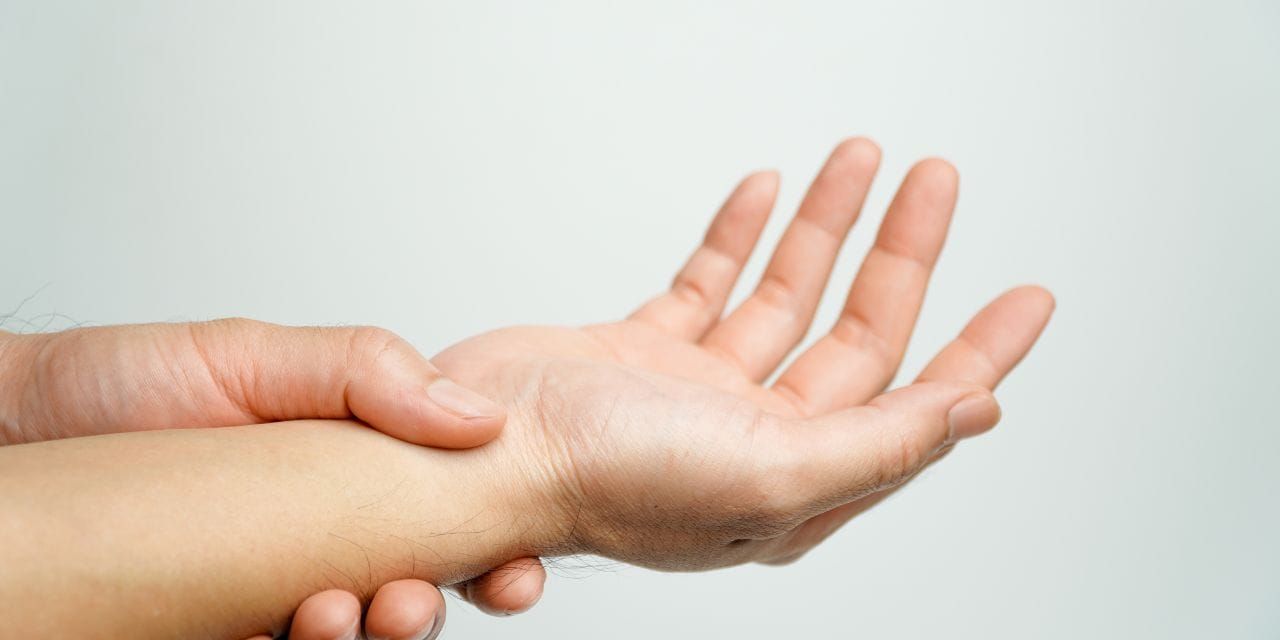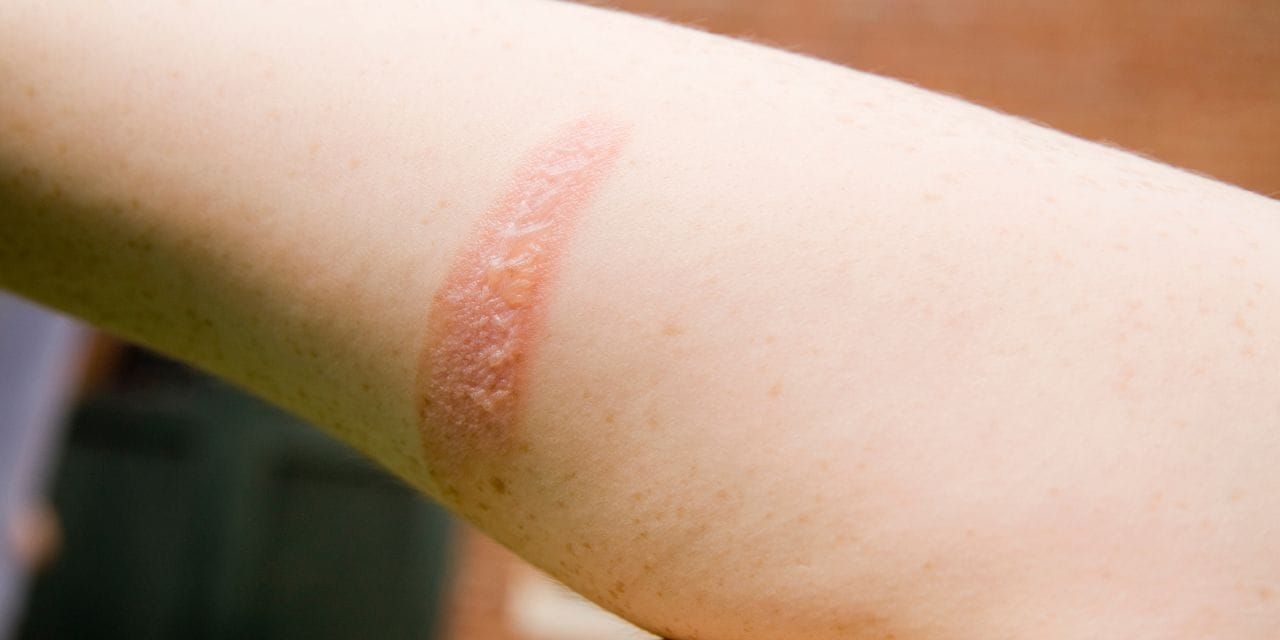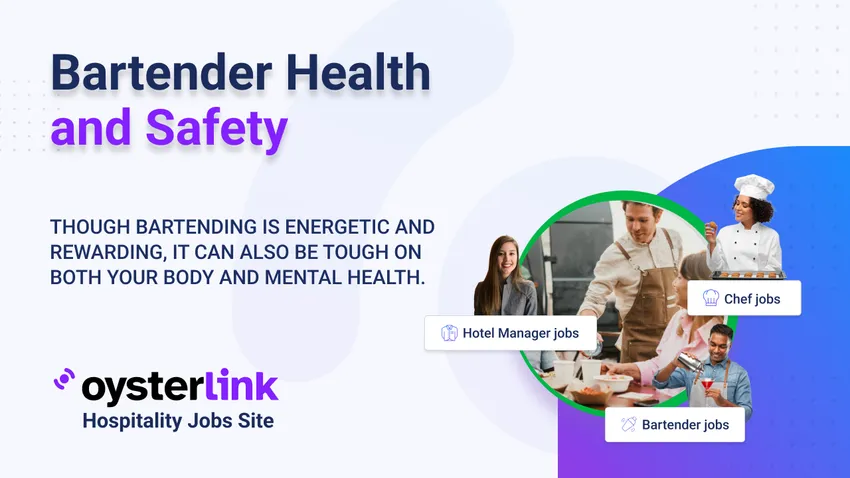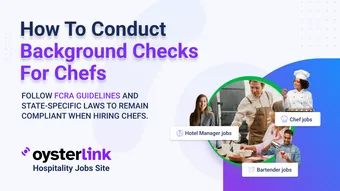Bartender Health and Safety: Key Takeaways
- Proper technique, ergonomic tools and supportive footwear are essential to prevent physical injuries and strain.
- Regular cleaning, non-slip mats and clear walkways help prevent slips, trips and falls behind the bar.
- Handling sharp objects, hot surfaces and hazardous substances requires training and protective gear to avoid cuts, burns and exposure.
- Employers are legally responsible for maintaining a safe workplace, adhering to safety laws and managing risks related to alcohol service and workplace violence.
Behind the bar, every shift is a mix of fast-paced service, multitasking and constant movement.
While the energy of bartending can be exciting, it also comes with risks — both physical and mental. Long hours, slippery floors and demanding customers can take a serious toll.
For Bartenders, staying safe means knowing how to minimize injuries and stress. For employers, a strong focus on Bartender health and safety leads to a more productive team and fewer workplace incidents.
Below, we cover the most common risks behind the bar and how to prevent them.
Bartender Health and Safety: Most Common Risks Behind the Bar
Here are some of the key risks behind the bar:
1. Physical strain and repetitive motion injuries

Bartending is physically demanding. Hours of standing, constant shaking and pouring and heavy lifting can lead to chronic pain or repetitive strain injuries.
Over time, these small stresses on the body add up, making tasks like carrying kegs or twisting open bottles increasingly difficult.
How to avoid them
Preventing strain starts with better posture, smart techniques and the right equipment. Here’s how Bartenders can reduce the risk of injury:
- Wear supportive, slip-resistant shoes to minimize foot and knee pain.
- Use anti-fatigue mats behind the bar to reduce the impact of standing.
- Stretch before and after shifts to prevent muscle stiffness.
- Alternate hands when shaking cocktails or pouring to avoid repetitive strain.
- Lift kegs, cases and ice bins with proper technique — bend at the knees, not the back.
Employers should provide ergonomic training and ensure Bartenders have well-designed tools that reduce strain.
2. Slips, trips and falls
With spilled drinks, melting ice and fast-paced movement, slips and falls are among the most common bar injuries.
A moment of lost balance can result in sprains, fractures or even head injuries.
How to avoid them
Keeping the bar area dry and organized is the best defense against falls. Bartenders and employers can take these steps to improve safety:
- Clean up spills immediately and place wet floor signs when needed.
- Use non-slip floor mats in high-risk areas like near sinks and ice bins.
- Keep walkways clear — store tools, bags and electrical cords in designated areas.
- Use proper step stools instead of unstable surfaces when reaching for items.
Bar Managers should enforce strict cleaning protocols and ensure proper lighting behind the bar.
3. Cuts and burns

Handling sharp knives, broken glassware and hot surfaces is part of the job. A quick slip while slicing fruit or a careless grab near an espresso machine can lead to serious cuts or burns.
How to avoid them
Proper handling techniques and protective measures can prevent painful injuries. Here’s what Bartenders should keep in mind:
- Always use a bar towel or gloves when handling broken glass.
- Store knives safely and use cut-resistant gloves if necessary.
- Be cautious around hot equipment like espresso machines, steam wands and food prep areas.
- If working with fire-based cocktails, follow safety guidelines and have an extinguisher nearby.
Employers should ensure a well-stocked first aid kit is available at all times.
4. Exposure to hazardous substances
Bartenders frequently work with strong alcohol fumes, cleaning chemicals and sometimes even dry ice or liquid nitrogen for specialty drinks.
Without proper handling, these substances can cause respiratory issues or skin irritation.
How to avoid it
Good ventilation and safe handling practices can reduce exposure risks. Bartenders should follow these precautions:
- Ensure proper airflow behind the bar to reduce inhalation of fumes.
- Wear gloves when handling strong cleaning agents or chemical-based drinks.
- Use protective gear when working with dry ice or liquid nitrogen.
Employers should implement clear safety guidelines for handling chemicals.
5. Workplace violence and difficult customers

Bartenders sometimes deal with intoxicated, aggressive or inappropriate patrons. Verbal abuse, harassment and even physical altercations can occur, especially in late-night settings.
How to avoid it
Handling difficult situations with the right approach can prevent escalation. These strategies help ensure a safer environment:
- Use de-escalation techniques and stay calm when dealing with aggressive customers.
- Work in teams and avoid confronting intoxicated individuals alone.
- Have security measures in place, such as panic buttons or bouncers.
Employers should enforce zero-tolerance policies for harassment and violence.
6. Stress
Bartending is high-pressure work. Long shifts, demanding customers and the constant rush can lead to burnout, anxiety or even alcohol dependence due to easy access to drinks.
How to avoid it
Supporting mental health is just as important as preventing physical injuries. Bartenders and employers can take these steps to reduce stress:
- Take regular breaks and schedule time off to avoid burnout.
- Build a support system with coworkers to handle tough shifts.
- Access mental health resources when needed.
Employers should foster a positive work culture that prioritizes well-being.
Legal Considerations and Employer Responsibilities
Ensuring Bartender health and safety isn’t just good practice — it’s a legal obligation. Employers must comply with workplace safety laws and alcohol regulations to protect both staff and customers.
Workplace safety laws
Bartenders have the right to a safe workplace under OSHA (Occupational Safety and Health Administration) regulations.
Employers are responsible for providing proper training on handling hazards, maintaining a clean and hazard-free work environment, and ensuring access to first aid supplies and emergency protocols.
Failure to meet these standards can lead to legal consequences and increased injury risks for employees.
Alcohol liability and legal risks
Dram shop laws hold Bartenders and establishments accountable for serving intoxicated patrons. I
f a customer causes harm to themselves or others due to over-service, both the Bartender and the business could face legal repercussions.
To mitigate these risks, Bartenders must always check IDs to prevent serving minors, recognize signs of intoxication and stop service when necessary.
Compliance with state and local alcohol service laws is essential to avoid fines, lawsuits and potential license suspensions.
Workers’ compensation and employer protections
Work-related injuries may qualify for workers’ compensation, allowing Bartenders to receive medical coverage and lost wages while recovering.
Employers can reduce the likelihood of injury claims by prioritizing safety training, maintaining thorough incident reports and securing the necessary insurance coverage to protect both employees and the business.
A proactive approach to workplace safety not only ensures compliance but also fosters a healthier, more secure work environment.
Find Supportive Workplaces With OysterLink
Bartending can be an exciting and rewarding career, but Bartender health and safety should never be overlooked.
By recognizing common risks and taking proactive measures, both Bartenders and employers can create a safer, more enjoyable work environment.
If you're looking for a workplace that values safety and professionalism, check out OysterLink.
With top-paying job listings and career resources tailored to hospitality workers, it’s the perfect place to find your next opportunity in a bar that truly supports its team.










Loading comments...